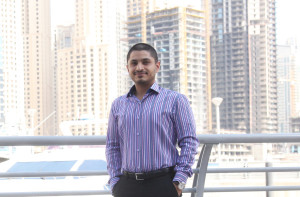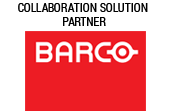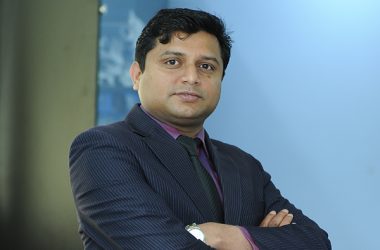
“Construction companies aren’t traditionally good collaborators,” Maisam Zaidi, Head of IT, ALEC, says. “The management often has a hard time communicating with the large user base, especially when not all employees have IT skills. An aligned workforce is essential, and this also means IT must align with business needs.”
Using Microsoft SharePoint 2013, Zaidi set about designing an intranet portal that employees could use to share their concerns, ideas and work needs, as well providing a centralised dashboard for financial results. Initiated in 2012, ‘ALEC Central’ would have to provide company news and updates, a powerful search tool, a self-service application and a knowledgebase.
The dynamic nature of the construction industry necessitated the introduction of the portal, with a constant flow of new projects arriving, requiring influxes of new staff. These new recruits and existing workers needed fast access to a tool that could provide them with up-to-date information and allow them to offer swift feedback to their employers. “Most companies grow organically but the construction business is not like that,” Zaidi says. “We needed a tool that could provide top class communication and collaboration between on-site workers – the ones who really matter – and us in the offices, as well as one that could optimise business processes. An aligned workforce was our ultimate aim.”
Agile methodology was central to Zaidi’s plan, meaning his team had to work in “three or four month sprints” to realise immediate benefits for parts of the project. “Stakeholder requirements constantly change, so we required fast completion of certain parameters of the project,” he says. “It’s no good getting a year down the line and finding that the CEO wants something completely different. Business realities change so it was important that we could flexibly move from one aspect to another. We focused on quick wins to prove to our stakeholders that we were adding value, and so we didn’t take on too much too soon and overcomplicate matters.”
In order to ensure that the project translated well to practical aspects of the business, a non-IT-based Project Manager was assigned to the task. “If a technology project is related to the business, it is a business project,” Zaidi says. “It’s better if someone who works in construction can oversee things because they have a better understanding of how the project can impact the business, not just IT. In this sense, the business also has to impact the technology.”
Zaidi was faced with the daunting prospect of key stakeholders rejecting proposals for the project, after the previously installed SharePoint 2007 was deemed a failure by ALEC. “The project hadn’t gone as planned,” he says. “Adoption of the software was relatively low and it was underused. With hindsight we can say the project was too technology focused; it had not been driven by the business and that was its greatest flaw.”
Fortunately Zaidi learned from the team’s previous mistakes and righted their wrongs, “Failure isn’t always bad. As long as you learn lessons and use evidence from the past to persevere then it can be beneficial. This time we used the business case to persuade them; we showed that one app could save a large number of man hours, which translated into returns,” he says.
On a practical level, given that a lot of employees had no access to desktop PCs, it was crucial that ALEC Central could be pushed through to employees mobile devices. As such, integration with iOS and Android operating systems would prove a challenge. Zaidi also says that like any IT project, the portal would receive a degree of employee resistance. “There are always roadblocks with testing,” he says. “There are also always a lot of employees who are not tech-savvy so require a bit more training.”
To ensure that the project “made people part of the ecosystem”, kiosks were installed on construction sites to allow workers access to the portal. In addition, an awareness campaign was pushed, which included a team of power users who went from site to site explaining the purpose of the project, and ensuring all employees were well trained in using the tool.
Throughout the process, Zaidi ensured that the implementation was tested by business users and stakeholders as well as IT workers. This was to ensure that “fresh perspectives” could be offered on progress, to ensure that objectives were satisfied on both business and technology fronts.
Rolled out in May 2013, the project has proven a success in comparison to the previous SharePoint venture. The completion of eight of the expected 30 parameters in the project has convinced Zaidi that selecting agile methodology has been the right move.
An important aspect of Zaidi’s aim for a smooth communication and collaboration tool was designing a feedback application for company staff. ‘Right ideas’ now offers employees an open-ended means to submit suggestions or give feedback. Zaidi believes a more accessible user interface has increased awareness of the app, “We’re now getting a lot of positive feedback from users,” he says. “In time the amount of suggestions that are put into practice will be the true test of its success.”
A variety of human resource, IT and accounting processes have now been smoothed by the introduction of ALEC Central. Things such as leave requests are now deployed much quicker, with employees able to directly submit electronic forms via the portal rather than fill in paper requests, which had to be passed from construction worker to site manager to office worker. This in turn has saved the company money on paper costs.
The central dashboard providing financial results and project progress also gives Zaidi’s team a comprehensive overview, of projects, which has facilitated decision making.
By pushing the portal to mobile devices, Zaidi has increased user adoption and enhanced efficiency. “In today’s world, you need to provide mobile access to everything via mobile devices; without that access you reduce your options,” he says. “A lot of users don’t have desktop PCs so that was an added reason why the move was a must. It’s crucial that business processes can be conducted directly on site, and everywhere else for that matter.”
Looking forward, Zaidi says work will continue on the portal to satisfy all 30 of the project’s parameters, which should be completed by mid-2015. He is confident that ALEC’s commitment to business-IT alignment will serve the business right in the long term, “At ALEC, IT is a business enabler and we focus on empowering our stakeholders via technology,” he says.





